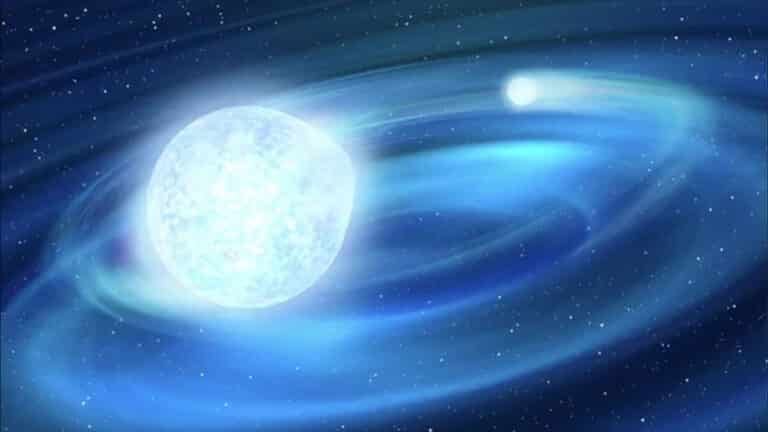An international research team has discovered a binary star system consisting of ultra-small, ultra-light stars with an extremely short rotation period around a common center of mass. Although theoretical models predict the existence of such systems in the universe, astronomers have never observed them.
Subdwarfs are small, very faint and relatively old stars first discovered by American astronomer Walter Adams (walter adams) and Alfred Joy (Alfred Joy) in 1922. At the time, these lights were called “intermediate white dwarfs” because they were dimmer than main sequence stars but brighter than white dwarfs. The term “subdwarf” later became common.
Later, experts began to discover more and more such objects. It turns out that these objects can differ from each other in size, temperature indicators, spectral class and even energy sources. Therefore, scientists began to divide these objects into cold and hot subdwarfs.
For example, one of the main differences between hot subdwarfs and cold subdwarfs is that the former burn helium in their cores, while the latter burn hydrogen. In previous studies, Chinese astronomers have suggested that hot subdwarfs may be the smallest stars in the universe and may also be part of low-mass binary star systems with ultrashort rotation periods (the mass of stars in such systems is probably 0.32 to 0.36 masses). The hypothesis of Chinese astronomers contradicts the opinion of the scientific community that the title of “smallest stars in the universe” belongs to red dwarfs.
But an international team of astronomers led by China’s Tsinghua University confirmed their colleagues’ assumptions. Using an array of optical telescopes T Tsinghua University-Ma Huateng Telescope for research (TMTS) scientists have found a binary star system with one of its companions being a small hot subdwarf. After detailed analysis of its parameters, it turned out to be the smallest star ever observed. The results of the study were published in the journal Nature Astronomy.
Star system determined TMTS J052610.43+593445.1It is located approximately 2760 light years from Earth. One of the residents – J0526AIt is a white dwarf with a carbon-oxygen core that is about 74 percent of the mass of the Sun. The second is a hot subdwarf J0526BIts mass is three times smaller than that of the Sun (0.33 percent of the Sun’s mass). It is interesting that the radius of this tiny object is only seven times larger than the radius of the Earth. For comparison: Jupiter’s radius is 11.2 times larger than Earth’s, and Saturn’s radius is 9.5 times larger. So a subdwarf J0526B less than two gas giants.
white dwarf J0526A and a hot dwarf J0526B rotates around the common center of mass with a period of 20.5 minutes; a record for such binary systems, but not for binary star systems in general. For example, the white dwarfs of the X-ray binary star HM Cancer orbit each other with a period of 5.4 minutes.
Interestingly, the new system has a heavier companion J0526A It has not been directly observed by astronomers. It turns out that it exists there in connection with gravity. Since a white dwarf is much denser than a subdwarf, it subjects its “partner” to a strong gravitational influence, as a result of which the spherical shape of the latter is deformed and begins to stretch.
The exact formation mechanism of hot subdwarfs still remains a mystery. However, it is known that such objects definitely cannot emerge as “classical” stars. The authors of the article hypothesized that the formation of subdwarfs requires a companion star, where gravitational interaction and matter exchange take place. Presumably the explosion of the white dwarf would cause the companion star to be ejected, turning the companion star into a subdwarf. Then gravity comes into play, which accelerates mutual rapprochement.
Further studies using ground-based and space-based telescopes will help confirm or refute this hypothesis. In any case, to fully understand what stars look like with fewer planets, you need to find as many such objects as possible.













